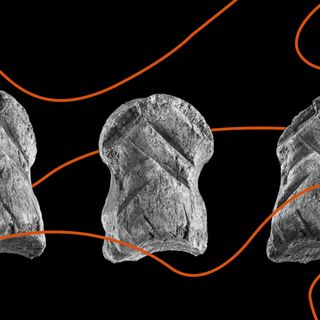Scientists have found high amounts of methane on Enceladus, one of Saturn’s moons. They believe the presence of this gas, along with other compounds that are associated with life on Earth, may carry links to biological processes on the planetary body.
The scientists studied the data collected by NASA’s Cassini-Huygens space mission. The findings, published in Nature Astronomy last month, explored the chemical composition of water clouds that erupt on Enceladus, Saturn’s sixth-biggest moon.
Previously, the Cassini probe found oceans beneath a thick sheet of ice on Enceladus that NASA suggested could contain the “building blocks of life“: the presence of nitrogen and oxygen in the ocean may help with the formation of proteins associated with biological life.
Recent findings of the probe showed high levels of methane, found along with compounds like dihydrogen (H2) and carbon dioxide — which are typically found on Earth’s ocean floors as hydrothermal vents. Hydrothermal vents are fissures of sorts on the seabeds, found near volcanically active places, ocean basins, and hotspots.
Interestingly, scientists found the hydrothermal vents could exist on Enceladus too. “…suggesting that the moon has deep-sea hydrothermal vents — the same type of environment that may have been life’s cradle here on Earth,” Space.com noted.
“Obviously, we are not concluding that life exists in Enceladus’ ocean,” one of the lead authors of the study Regis Ferriere, of the University of Arizona, said. “Rather, we wanted to understand how likely it would be that Enceladus’ hydrothermal vents could be habitable to Earthlike microorganisms.”
Related on The Swaddle:
Mars Was Once Habitable For Millions of Years, Research Shows
The study of hydrothermal vents was crucial here. Within these, H2 supports unique ecosystems in which life depends — organisms in the vents don’t require sunlight for their food and instead rely on chemical reactions.
“H2 provides energy for some Earth microbes that produce methane from carbon dioxide, in a process called methanogenesis,” Space.com noted. Something similar could be happening on Enceladus. The discovery of H2 along with peculiarly high levels of methane could hint at microorganisms of a kind.
At the heart of the scientists’ study was the investigation of the methane produced was due to biological or non-biological reasons. They modeled the methane levels observed on the moon in their labs, and found both biological or geochemical explanations for it.
“We wanted to know: Could Earthlike microbes that ‘eat’ the dihydrogen and produce methane explain the surprisingly large amount of methane detected by Cassini?” Ferriere said.
One hypothesis is the geochemical processes that do not take place on Earth could be responsible for the methane build-up. But scientists say that the discovery allows for the possibility that biotic processes (that deal with living organisms) could be responsible, which is significant in itself.
Overall, results showed that there could, in theory, be microbes in the oceans of Enceladus. “Searching for such microbes, known as methanogens, at Enceladus’ seafloor would require extremely challenging deep-dive missions that are not in sight for several decades,” the study noted.
For now, however, rejecting the life hypothesis would require more missions to Enceladus, and more data, the researchers concluded.
“In other words, we can’t discard the ‘life hypothesis’ as highly improbable. To reject the life hypothesis, we need more data from future missions,” Ferriere said.




